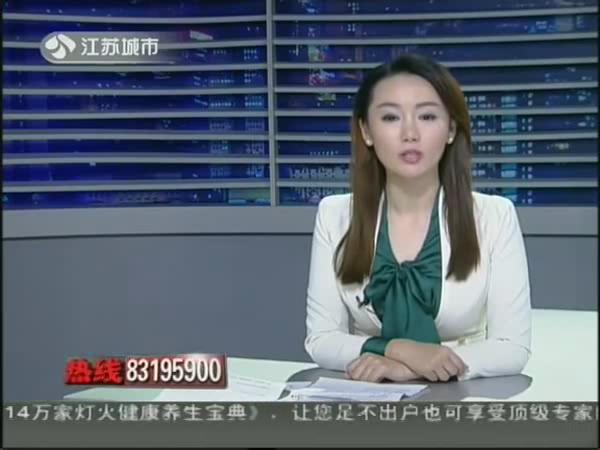https://www.regulationasia.com/?p=254426
Trade Based Money Laundering (TBML) has been an area of concern for the Financial Action Task Force (FATF) as well as banking regulators in various jurisdictions for many years. The thought process behind this was that there are three main methods to move illicit funds or transfer its value – first through smuggling of cash, second through electronic transfers via the financial system, and third through the global trade system and movement of goods. The concern is that as governments and banks build better controls to combat the movement of funds through the first two methods, criminals and money launderers are increasingly turning to the third to achieve their objectives.
The magnitude of TBML is concerning; the World Economic Forum (WEF) estimated in 2021 that TBML and associated tax evasion crimes contributed to almost USD 9 trillion of financial losses in developing countries between 2008 and 2017[1]. Regulators require banks to have programmes and controls in place to combat money laundering and other financial crimes, including TBML. The idea in gist, is that the banks involved in processing financial transactions or moving value, should look out for red flags or signs of TBML indicative of key TBML typologies such as over/under invoicing, over/under shipment, multiple invoicing, fictitious documents and shipments etc.
However, a number of factors – such as the sheer volume of international trade, the nature of transactions which are cross border and typically involve a multitude of companies and service providers in various jurisdictions and across industries, the reliance on paper documentation, and the segregated activities between the movement of goods and the transfer of value involving those goods are – all make detection and mitigation of TBML extremely challenging.
If the current anti-financial crime regime is said to have a limited impact on crime vis-à-vis the growing scale of global money laundering[2], the picture for TBML is even more bleak, where TBML related Suspicious Activity Reports (SAR) typically form an insignificant proportion of total SARs filed by most banks. What could be the factors behind the low effectiveness of current efforts to combat TBML, and what can we do to up the game against TBML?
Practical challenges of assessing price / transaction authenticity from documents
Consider the control of performing price checks to assess whether there is potential over/under invoicing of goods. While fairly accurate reference pricing may be available for certain common market traded commodities for such checks to be conducted in a more effective manner, it is generally very difficult to compare prices of other goods or services solely based on the descriptions in the trade documents. There is no uniformity in how to describe such goods, and factors such as quality, brand, trade incoterms and timing of the trade can all affect the pricing of the goods, where such information may not be discernible to bank trade processors handling the documents.
Beyond classic textbook examples of the obvious, grossly mis-priced items (think a $1000/pc T-shirt), banks are seldom able to make an accurate determination whether the goods in question are priced accurately just from handling documents. The ICC shares a similar view on such practical challenges in a paper[3] published in July 2023.
Other than price checks, the other cornerstone of TBML programmes entail red flag checking, such as assessing whether the trade activity is consistent with the transaction party’s line of business, or looking out for discrepancies across contracts and other trade documents, potentially fictitious documents, suspicious shipment routes etc.
While obvious anomalies such as a poorly photoshopped invoice or an engineering firm exporting foodstuffs may be easy to detect, such red flag analysis typically require a deeper understanding of the customer and parties’ involved, knowledge in the market or industry applicable, or certain expertise in shipping practices etc. Such skillsets often rest with only a select number of experts in the trade processing units of banks, usually in structured trade teams and not the teams handling general trade where the bulk of trade finance volumes are processed.
The time-sensitive nature of trade transactions also limit the depth of analysis that banks can undertake during processing, with many adopting a uniform checklist approach to provide documentation cover that the red flags have been analysed, rather than on meaningful analysis and focusing on higher risk transactions with greater probability of detecting financial crime.
Trade-Based Money Laundering, or Trade Finance-Based Money Laundering?
Another driver behind the low effectiveness of anti-TBML efforts may be that many banks have built their control frameworks focusing solely around trade finance products and transactions. Control processes such as price checking, screening of parties besides the buyer and seller and vessels, voyage checking, independent document verification, and red flag analysis are typically performed at checkpoints during the trade finance process such as at application or receipt of documents, for products such as documentary credits and collections.
Open account transactions, on the other hand, are typically only sanctioned screened as banks would only be involved in processing a payment between the buyer and seller. These payments will typically be processed straight through if there are no screening hits resulting in the payment being stopped for review. Although these payments are also monitored like others in post-transaction monitoring processes of banks, the rules and scenarios are typically unable to discern they are related to open account trade and the trade context is not present unless they are further reviewed and further documentation is requested.
While there are differing schools of thought on whether criminals would prefer and use trade finance products for TBML or go through open account, considering that more than 80% of global trade today takes place on open account basis, any control framework to tackle TBML that only considers trade finance products and transactions can necessarily be said to be inadequate in coverage.
Back to basics: a focus on Know Your Customer and Know Your Counterparties, powered by Technology
If time and experience have told us that the current approaches (centered on transaction processing due diligence and focused on trade finance products) have limited effectiveness, we ought to consider whether to press down the same path or rethink the whole approach and design of the approach.
Given that an element of collusion must exist between the buyer and seller for TBML and the transfer of value to take place, perhaps we need to reframe the thinking on due diligence and analysis to focus the perspective on the customer and parties involved than on the trade or goods themselves. What if time and resources spent on price checks and manual red flag check-listing could be re-channeled to other control processes banks’ compliance units are adept at, such as adverse media and public searches on the parties involved?
What if banks could perform more due diligence on the counterparty involved such as ownership checks and website reviews, which has often helped in uncovering potential shell companies? How about analysing the output of network link analysis to look out for potential connections between the buyer and seller and to other sanctioned / adverse parties, instead of manually combing pages of photocopied contracts and documents to pick out names for only screening?
The depth of checks for the above controls may seem more daunting and time-intensive to perform, but could be alleviated through the increased use of technology and automation. There are already fairly good offerings in the market today for automating screening and hits adjudication, adverse media due diligence and performing network link analysis. For practical considerations, banks may also have to perform a lot of the due diligence and analysis on a post-transaction basis. This is necessary especially if coverage is extended to payments to cover open account risks.
When adopting a customer and counterparty-centric due diligence approach, banks can obtain more risk insights based on a broader view of the trading parties’ business profile and overall activities, as opposed to the insights from analysing a singular transaction. Using technology-supported approaches such as event risk scoring and escalating only customers that have breached statistically set thresholds will further enable banks to add structure and scale to their approach and consistently prioritise higher-risk customers for review.
Public Private Partnerships and greater industry information sharing
Another area that could be looked into to improve the success of anti-TBML efforts is increasing public-private partnerships (PPP) and industry information sharing. Having multiple industries and agencies participating in PPPs such as including customs and law enforcement authorities can help facilitate the flow of important information and insights on risks and typologies to the financial sector. This will help reduce some of the problems of information asymmetry due to the trading of goods and financial flows taking place in separate ecosystems. These insights can help banks in their calibration of their due diligence approach such as the profile and industries of their clients to focus on.
Increasing industry information sharing will also enable banks to leverage each other’s due diligence efforts, amplifying the effects of risk mitigation. For instance, bad actors will find it harder to arbitrage and bank hop when they are de-risked by a bank for TBML concerns if information on the company and activity of concern was shared with more banks. For the information sharing mechanism to be effective, safeguards on customer information confidentiality and information security, and standards on when information qualifies for sharing to control the quality of intelligence shared, need to be established.
Information sharing platforms such as COSMIC[4] launched by the Monetary Authority of Singapore (MAS), underpinned by a legal framework and participant agreed standards on the sharing of customer information within the platform only if certain objectively defined red flags are met, hold significant promise to augment industry capabilities to combat financial crime. It is noteworthy that the misuse of trade finance for illicit purposes is one of the key financial crime focus areas within the scope of COSMIC.
The advent of PPP and industry information sharing can help create a virtuous circle where the efforts of the banks’ improved anti-TBML approach and controls lead to more effective industry information sharing and better suspicious transaction reports to law enforcement. In turn, the improved risk insights from law enforcement can be fed back to the banks via the PPP and other feedback loops for banks to continuously calibrate and improve their due diligence approach.
Conclusion
TBML continues to be an area of concern for regulatory bodies and the financial industry, and this is only expected to grow as global trade continues to increase. Factors such as the volume of international trade, the cross-border and multi-party nature of transactions, and the segregation of the systems that move the goods and handle the transfer of financial value all make detection and mitigation of TBML extremely challenging.
Given this complexity, TBML cannot be addressed by regulating and focusing on due diligence performed by banks alone. A multi-prong approach that involves increased multi-jurisdictional law enforcement cooperation and information sharing, PPP, and the involvement of customs agencies and other players involved in facilitating cross-border trade is required to address the problem of TBML more effectively.
However, given the limited effectiveness of their present approaches to combat TBML, banks need to think about how they could play a more effective role and make their effort and resources spent more productive. Perhaps what we need is a rethink on the whole design of the approach rather than continue building on the current one and fixing more chinks in the armour.












